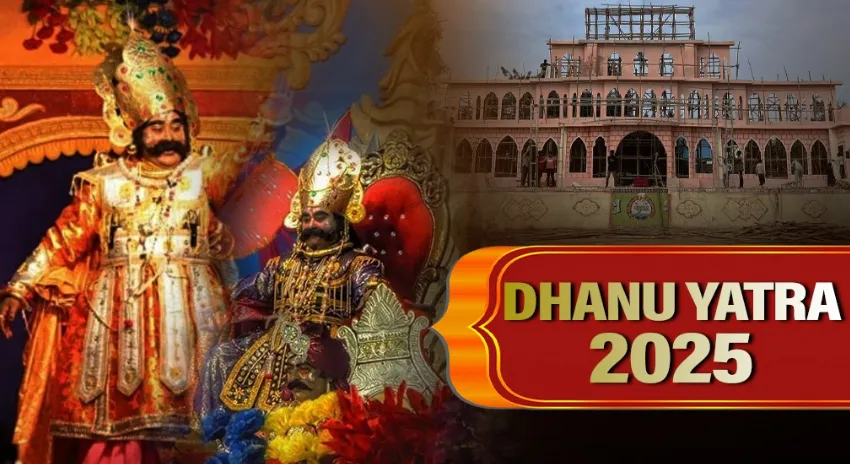

Bargarh, Dec 27: In a joyous celebration, the third day of the renowned Muktakash Rangmanch festival in Bargarh witnessed the long-awaited Nand Utsav, a festivity dedicated to the birth of Lord Krishna. This event, celebrated with great fervor in Gopapura, saw devotees rejoicing as they gathered to honour Lord Krishna, rejoicing in the divine occasion with prayers, music, and cultural rituals.
The celebrations began with the chanting of Hari Naam Sankirtan and devotional dances, enveloping the town in a spiritual atmosphere.
Gopapura residents performed pooja at their homes, offering Purnna Kalashi, incense, flowers, and delicious Naivedya to the Lord. Meanwhile, the Gopangana women were seen in ecstatic devotion, participating fervently in the rituals along with Nanda Raja and Nanda Rani, who represented Krishna's divine parents.
The backdrop of this celebration is deeply tied to the legendary tale of Krishna's birth. As per the ancient myths, King Kansa of Mathura, after learning about the prophecy that Krishna would be the cause of his demise, tried to eliminate the newborn by sending his minions. On the night of Krishna's birth, as the prophecy began to unfold, a miraculous event occurred: the child was born to Devaki, but due to divine intervention, Krishna was safely transferred to Nanda Baba's care, leading to a joyous celebration.
As the celebrations continued, the scene shifted to Kansa's palace where, in a fit of rage and frustration, Kansa ordered the killing of the newborn Krishna. He sent his warriors, including the demoness Putana, to eliminate the child. However, despite their efforts, Krishna survived all attempts on his life, which further enraged Kamsa.
The Nanda Utsav celebrations also coincide with the tale of the transformation of Krishna's life, including the role of his divine parents, Nanda and Yashoda, who were both crucial to his childhood and upbringing in Gokul. The day was marked by performances from artists invited from outside the state, bringing vibrant cultural expressions through drama, music, and dance.
The local festivities included songs from the beloved Bhakti Geet and Raas Leela, recreating the divine play of Krishna. The evening ended with a spiritual dance performance and an intense portrayal of Krishna’s confrontations with various demons, concluding with a symbolic victory over the forces of evil.
This celebration was not just a religious event but also a profound reminder of the power of faith and devotion, as seen through the eyes of Gopapura's inhabitants, who continue to carry the legacy of Krishna's birth and triumphs forward with enthusiasm and reverence.